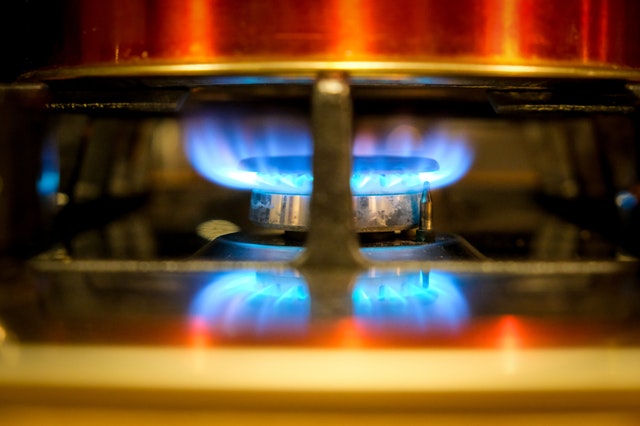Shape design is a discipline used in the manufacturing of gas products. It involves the detailed examination of gas product designs to ensure that they are operating efficiently, safely, and cost-effectively. If you’re unfamiliar with terms like distribution blocks, you’ll want to give this a read.
A gas product can have one of several different shapes, which affect its performance and operational characteristics. The shape of the product may be of particular importance in certain applications. For instance, a ball valve with a linear shape may be operationally more suitable than a ball valve with a spherical shape.
Similarly, a pipe with a circular cross-section, low wall thickness, and smooth inner surface may be operationally more suitable than the same pipe with a rectangular cross-section, high wall thickness, and rough surface. The shape of the product is also a key issue in applications such as leak detection where the design of a product with a particular shape may be more effective than one that is not.
What is shape design?
After materials and dimensions have been selected for a particular gas product, the next step is to determine the product geometry, position, and size of its parts. The gas user or manufacturer may require certain product geometries to ensure optimum safety and efficiency.
Geometry is the measurement of a gas product’s external dimensions and can include the length and diameter of a pipe, the cross-section of a valve body, or the distance between the interior and exterior surfaces of a restrictor.
Benefits of Shape Design in Gas Products
Shape design can improve overall product performance, especially in applications that are affected by variations in the material properties of the gas.
For example, a ball-valve body operating with a spherical shape will experience reduced stem-to-seat friction than a linear-bodied ball valve with the same diameter. The same is true of pipe internal friction, which is reduced when the inside of a pipe with a circular cross-section is compared with a rectangular one. A ball-valve body with a spherical shape may also experience less resistance than a linear-bodied one when operated on very low-viscosity gases.
Types of Shape Design in Gas Products
Shape design for gas products can involve both geometric and functional considerations. Geometric shapes also include the product size, which can be important in applications involving flow rates such as leak detection, or where product dimensions must be easily understood by users such as meter installation personnel.
Functional considerations relate to the design of the gas product with regard to flow, pressure, or temperature, which may affect the functionality of the device, such as an actuator, a controller, or a valve.
How to Achieve Combined Shape and Functionality in Gas Products
Combined shape and functionality can be difficult, since each design factor may have an effect on the other two.
For example, in a valve, a spherical body is generally more efficient to operate than a linear one because of less stem-to-seat friction. A spherical body also has fewer components and is easier to assemble, which can reduce manufacturing costs and is less sensitive to wear from external forces such as spring-loaded joints.
A functional consideration may also have an impact on product shape. For example, the external diameter of a ball-valve body, which determines the flow rate, can be optimized for an application involving high flow rates, e.g. residential gas supply, but will also have an effect on product size, affecting the cost of manufacture.
How to Achieve Combined Shape and Functionality in Gas Products
Combined design should be the result of a thorough analysis of the application, and the selection of the most suitable geometric and functional elements for the product. In most cases, the shape design engineer will work in close cooperation with the product engineer or designer responsible for the overall design of the product. The design of the distribution blocks can have an impact on the quality of gas products as a whole.
The product engineer or designer will be able to provide guidance on the effects of product geometry and functionality on overall performance, as well as on aesthetics and ease of manufacture.
The shape design engineer can also use simulation tools to help understand the behavior of products under various operating conditions and to aid in the selection of the right products for the right applications.
Effect of Shapes on Leak Detection Efficiency
The efficiency of leak detection can be affected by the presence of irregularities in a valve design or body geometry. For example, a valve with an irregular surface may experience reduced pressure drop across the valve face and hence may be less efficient for leak detection.
A ball-valve body with a spherical shape may experience less resistance than a linear-bodied one when operated on very low-viscosity gases. On the other hand, the spherical body of a ball valve may be less efficient for leak detection.
Additional Info
The application of shape design has evolved considerably over the past few decades. New manufacturing techniques, materials, and equipment have enabled greater product design freedom and resulted in a vast increase in the number of new gas products entering the market.
The challenge to the shape design engineer is now to ensure that the products that are launched are safe, effective, and cost-effective.
Take a look at Telco’s selection of gas products
The gas products that are offered at Telco are marvels of product efficiency through shape design. The shape and design of each and every one of our gas products have been engineered for perfection, efficiency, and productivity.
If you want gas products that are engineered for success, you’ll want to put Telco gas products to the test, shop today!
